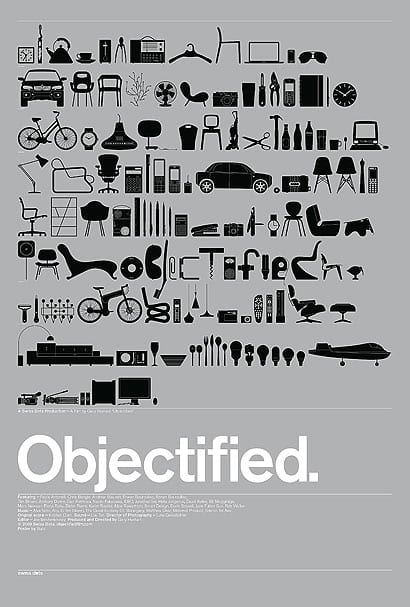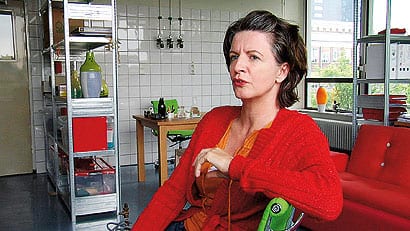|
Jonathan Ive (image: Gary Hustwit) |
||
|
A feature film about product design is a rare thing indeed. This one is set in a strangely familiar parallel universe with an all-star cast. It’s got popcorn value but what about the plot, asks Justin McGuirk. In the Big Brother house, an argument is brewing. Karim Rashid wants to chuck out a spindly wooden chair that Bill Moggeridge is rather attached to (because it just gets better with age) and replace it with his own “techno-organic” chair in pink plastic (because it’s just so “now”). Meanwhile, in the kitchen, Ronan “the fox” and Erwan “the hedgehog” Bouroullec are playing good cop and bad cop with Marc “the drunk Australian” Newson, trying to get him to stop pulling apart the coffee machine so he can see how it works. Dieter Rams looks up from trimming his Bonsai tree and shakes his head in disgust: “Everysing iz going to scheisse.” Oh, what a cast of characters. It’s not every day that industrial design is the subject of a feature-length documentary, to be released in actual cinemas. Architecture has had its movies – yes, mainly biopics made by the traumatised children of architects about their absentee parents – but not, until now, industrially manufactured products. No wonder the design community has been fizzing with anticipation. Objectified is directed by Gary Hustwit, the man who, in Helvetica, managed to make a really quite successful movie about a boring Swiss font. Impressive. There’s only one snag: Helvetica was highly focused and followed a simple narrative premise: namely, this typeface is anything but boring. The trouble, or perhaps the challenge, of Objectified is that it’s about industrial design – in general. As the director himself admitted in a Q&A after the London premier a few weeks ago, this is a film about “everything”. To tell the story, Hustwit has assembled an all-star cast: Newson, Rashid, Jonathan Ive, Naoto Fukasawa, the Bouroullecs, Hella Jongerius – the list goes on, with impressive supporting roles by what feels like the entire staff of IDEO. These are the amazing people who invisibly shape our lives through our toothbrushes and dustbins. Or so reads the subtext of a movie that is both celebratory and, understandably, reaching out to as wide an audience as it can get. It felt almost unsporting of critic Alice Rawsthorn – again in the Q&A, although she is also in the film – to point out that what 99 percent of designers produce is less than mediocre. In that sense, this is a movie like any other – it’s about heroes. I think an enlightened lay audience will enjoy it. They’ll come out of the cinema and say it was “interesting”. The interviewees are all articulate and rather charming, and the interviews are seamlessly edited. So well edited, in fact, that you could be forgiven for thinking that everyone is singing from the same hymn sheet and that the design world is this benign parallel universe where everyone is just trying to make the world a better place. All of which is hogwash. The movie is riddled with contradictory positions, and sort of unravels the more you think about it. According to one voice we’re supposed to make things that last, according to another we’re supposed to make them as disposable as possible. One person’s motivation is to make things that don’t yet exist, another thinks we should be launching a campaign for the things we already own. The director steps back and presumably hopes that the audience will see the plurality of the design community and not a lack of direction. And yet the movie ticks along, perfectly entertainingly. There are no great revelations or challenges. From the opening shot of a Jasper Morrison chair being injection-moulded in a factory, Hustwit presents the conservative position that design is what precedes mass production. And yet the film does have breadth: you have Chris Bangle arguing that one day soon ordinary people will design their own things (see our essay on page 048); you have a whole host of people talking about the challenges of sustainability and how little progress we’re actually making on that front; you have MoMA’s Paola Antonelli putting the case for design expanding into “service design”. In fact, Antonelli argues that designers ought to be the intellectuals of the future. I particularly enjoyed that bit because earlier we’d seen the Bouroullecs describing themselves according to the philosopher Isaiah Berlin’s definition of talents as either foxes or hedgehogs (the fox knows many things but the hedgehog knows one big thing) and for a moment her idea seemed plausible. In a strange way the film reminds me of the early days of icon – that naive sense of voyeurism, the novelty of looking behind the scenes of design, exposing the thought processes and the people. And it is a very particular set of people – the celebrities of the design world. By now of course they’ve all been over-exposed in countless magazines. And so, even though – with the public growing increasingly savvy about design – it’s high time a mass medium tackled this subject, the whole project feels somehow just out of date. As out of date as the notion that the objects we buy make us who we are.
Hella Jongerius (image: Gary Hustwit)
Naoto Fukasawa (image: Gary Hustwit) |
Words Justin McGuirk |
|
|
||
|
Chris Bangle (image: Gary Hustwit) www.objectifiedfilm.com |
||






















